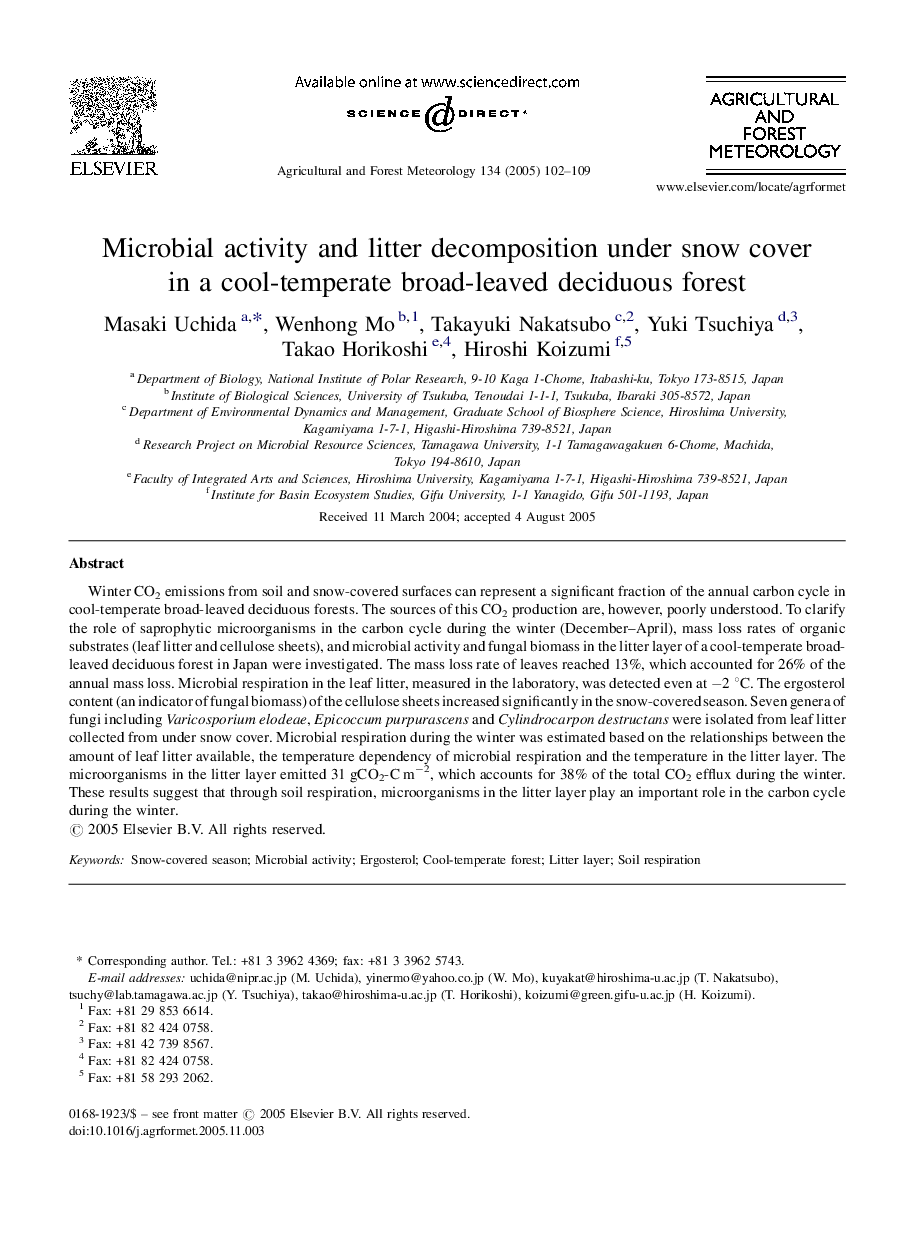| Article ID | Journal | Published Year | Pages | File Type |
|---|---|---|---|---|
| 9619413 | Agricultural and Forest Meteorology | 2005 | 8 Pages |
Abstract
Winter CO2 emissions from soil and snow-covered surfaces can represent a significant fraction of the annual carbon cycle in cool-temperate broad-leaved deciduous forests. The sources of this CO2 production are, however, poorly understood. To clarify the role of saprophytic microorganisms in the carbon cycle during the winter (December-April), mass loss rates of organic substrates (leaf litter and cellulose sheets), and microbial activity and fungal biomass in the litter layer of a cool-temperate broad-leaved deciduous forest in Japan were investigated. The mass loss rate of leaves reached 13%, which accounted for 26% of the annual mass loss. Microbial respiration in the leaf litter, measured in the laboratory, was detected even at â2 °C. The ergosterol content (an indicator of fungal biomass) of the cellulose sheets increased significantly in the snow-covered season. Seven genera of fungi including Varicosporium elodeae, Epicoccum purpurascens and Cylindrocarpon destructans were isolated from leaf litter collected from under snow cover. Microbial respiration during the winter was estimated based on the relationships between the amount of leaf litter available, the temperature dependency of microbial respiration and the temperature in the litter layer. The microorganisms in the litter layer emitted 31 gCO2-C mâ2, which accounts for 38% of the total CO2 efflux during the winter. These results suggest that through soil respiration, microorganisms in the litter layer play an important role in the carbon cycle during the winter.
Related Topics
Physical Sciences and Engineering
Earth and Planetary Sciences
Atmospheric Science
Authors
Masaki Uchida, Wenhong Mo, Takayuki Nakatsubo, Yuki Tsuchiya, Takao Horikoshi, Hiroshi Koizumi,
